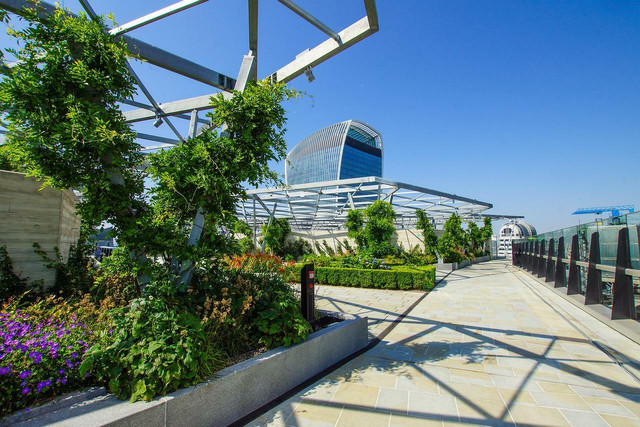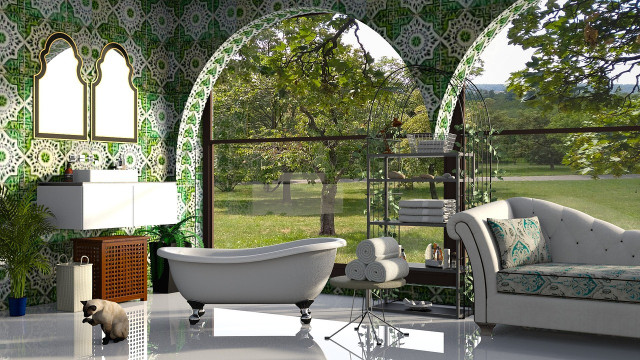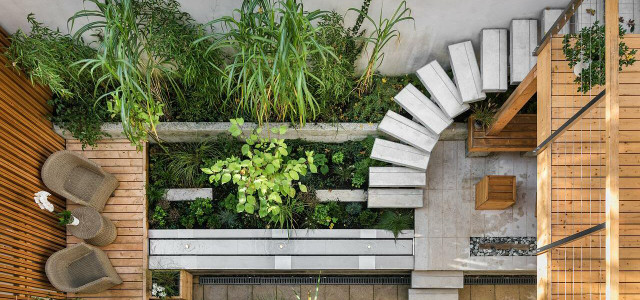Biophilic design promotes health and well-being by nurturing the human relationship with nature. There are several biophilic buildings throughout the world, from office spaces to apartments and more!
Biophilic design focuses on connecting humans with the natural world in a meaningful way. There are six principles of biophilic design;
- Environmental features: Incorporation of natural elements such as water, sun and vegetation. Architects may incorporate these elements by designing large fountains, sunroofs and gardens throughout the building.
- Natural shapes and forms: Designing spaces with curves, rather than right angles and straight lines which are rarely seen in nature. Columns and arches are often found in biophilic architectural design.
- Natural patterns and processes: Used to create a sensory experience so that building occupants feel they are in a natural space.
- Light and space: The above, preferably natural light through large windows.
- Plant-based relationships: Achieved through images of geographical features such as mountains and deserts. House plants can also be used.
- Evolved human-nature relationships: Designing the building while prioritizing the natural environment. This is done by taking caution in preventing environmental hazards and protecting natural habitats.
Benefits of Biophilic Design

The benefits of biophilic architecture are myriad. Biophilic design has been shown to improve cognitive function, psychological well-being and physical health. Through the incorporation of soothing natural elements and the prioritization of the human relationship with nature, biophilic design has the ability to reduce stress, increase creativity and clarity of mind, expedite healing and improve mood. The psychological responses to biophilic design include lowering tension, anxiety, fatigue and more, in comparison to responses to more urban environments with less natural elements.
Not only is the use of biophilic design beneficial to human health and well-being, but it’s also good for the environment as well. Biophilic buildings are centered around nature, so the design and building process prioritize environmental health. The buildings themselves rely on lots of natural light and airflow, as well as actual vegetation both in and around the building. This helps building occupants decrease their carbon footprints as there is less need to rely on air conditioning and artificial lighting.
Biophilic Architecture Examples



- Apple Park, California: Apple’s Silicon Valley Campus is a great example of biophilic design. The entire structure is a hollowed-out circle, allowing for loads of natural light and curved angles. The campus is also surrounded by forest.
- The Spheres, Seattle: Amazon’s Seattle offices are spherical greenhouses full of all different types of plants. The offices are almost entirely walled with windows, providing an immersive experience of nature.
- Bosco Verticale, Milan: These residential towers in Milan, Italy are covered in all sorts of plants and bushes. The beautiful balconies and building walls stay green through a captured rainwater irrigation system.
- The Wardian, London: Located in the London city center, the Wardian offers unique apartments with floor-to-ceiling windows, extra high ceilings and beautiful balcony views. The Wardian offers private gardens and a sanctuary-like swimming pool for the residents.
- Khoo Teck Puat Hospital, Yishun, Singapore: This hospital helps promote patient healing through the use of plentiful natural light and airflow, as well as lush vegetation. Forest-like gardens sprawl throughout the building.
Read more:
- 12 Awesome Examples of Green Architecture in the US
- Geodesic Dome House: What Is It — And What For?
- Agrihoods: Is Sustainable Suburbia the Way Forward?
Do you like this post?






